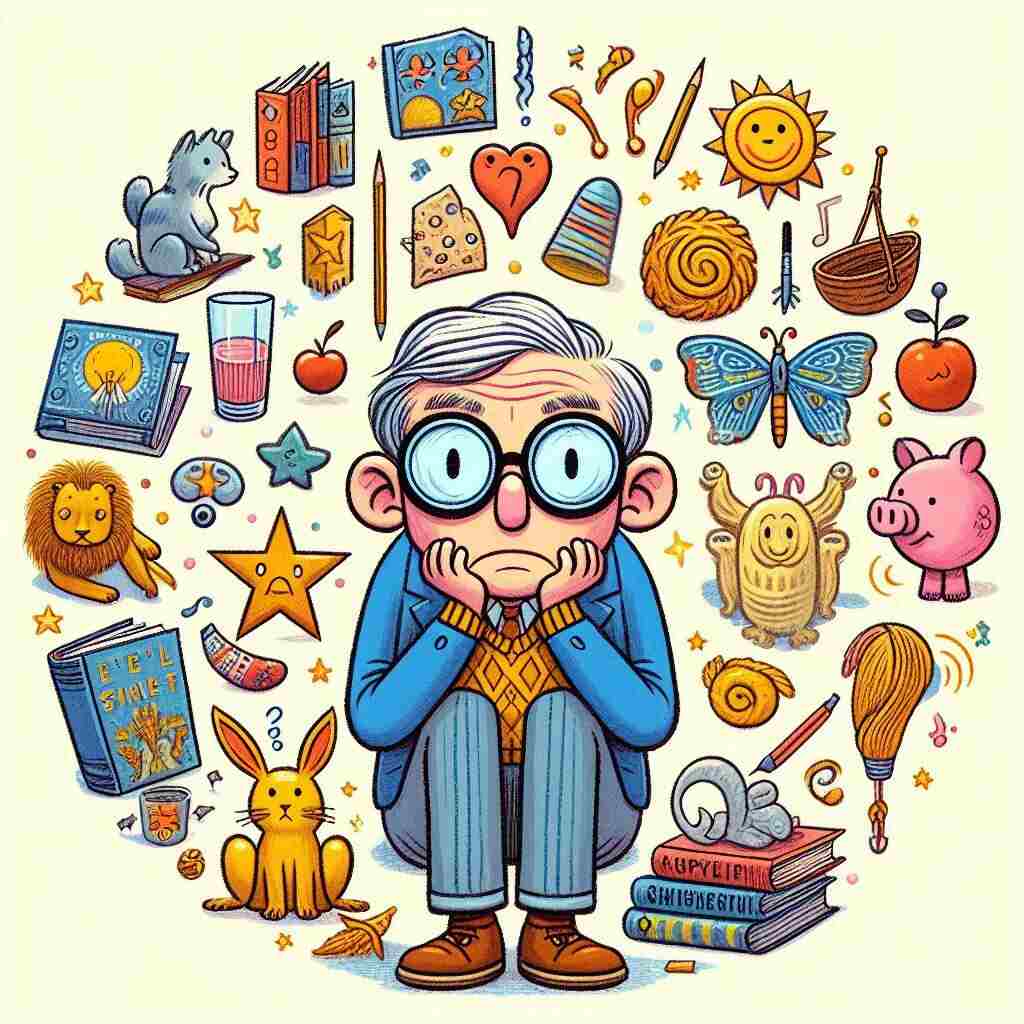What Is “Dav Pilkey Symbols”?
If you’ve ever searched “what is Dav Pilkey symbols,” you’re not alone. Folks often type this when they’re trying to figure out the repeating icons, visual cues, and themes that show up across Dav Pilkey’s books—especially Captain Underpants, Dog Man, and Cat Kid Comic Club. In short, they’re not looking for a single official emblem; they’re trying to decode the visual language that makes Pilkey’s stories instantly recognizable and wildly fun to read.
The quick answer in plain English

Dav Pilkey’s “symbols” are the recurring pictures, design tricks, and themes—like underpants, capes, flip-book arrows, paw prints, badges, hearts, taped-up zines, bold sound effects, and thick, hand-drawn lines—that signal humor, heroism, creativity, friendship, and kid power.
Why the wording is confusing
There isn’t one “Dav Pilkey symbol” the way a sports team has a single logo. Instead, Pilkey uses a toolkit of visual motifs and thematic cues that keep showing up and carrying meaning, book after book.
Who Is Dav Pilkey? (30-Second Background)
Dav Pilkey is the author-illustrator behind blockbuster series that hook millions of kids on reading. His best-known worlds—Captain Underpants (novels with comics), Dog Man (graphic novels), and Cat Kid Comic Club (hybrid comics/creation handbook)—blend slapstick humor with surprising heart. He draws like a kid on purpose: chunky outlines, crayon-bright colors, and DIY textures. That “amateur” vibe is intentional—it tells readers, “You can make stuff like this too.”
Captain Underpants, Dog Man, and Cat Kid Comic Club at a glance
- Captain Underpants: Two prank-loving kids, a grumpy principal, and a hypnotic twist that turns authority on its head (in tighty-whities).
- Dog Man: A police dog and a cop become one heroic being—silly on the surface, tender underneath.
- Cat Kid Comic Club: A classroom of frog siblings learns to make comics, mess up, and try again.
What Do We Mean by “Symbols” Here?
When we talk about “symbols” in Pilkey’s work, we mean three overlapping things:
Visual icons vs. recurring themes vs. design signatures
- Visual icons: Underpants, capes, paw prints, hearts, badges, tape, zines, flip-arrows.
- Recurring themes: Friendship, creativity, responsibility, second chances, mischievous joy.
- Design signatures: Hand-lettered sound effects, thick marker lines, wobbly frames, cut-paper textures, mini-comics within the main story.
Visual Symbols in Captain Underpants
Pilkey’s breakout series is practically a crash course in visual symbolism for young readers.
The underpants & cape (goofy courage)
Underpants plus a fluttering red cape are both punchline and promise. They say, “Yes, this is ridiculous—and yes, courage can look ridiculous.” Kids learn that heroism isn’t about perfect costumes; it’s about stepping up (even if you look silly).
Toilets, plungers, and over-the-top villains
The big, baddie-as-plumbing-fixture gag isn’t just for giggles. Toilets and plungers show that “gross” or mundane objects can be epic. It’s an invitation to reimagine the everyday as adventure material.
The 3-D Hypno Ring (kid power and imagination)
The hypnotic ring (the cereal-box kind) flips the power dynamic. Two creative kids suddenly have agency. Symbolically, imagination becomes a remote control for reality—an empowering idea for readers who often feel ruled by school bells and adult schedules.
Flip-O-Rama arrows and speed lines (movement you can feel)
Those little arrows and “flip now!” cues do more than animate fights; they turn reading into play. The message: “Books move. You move them.” That interactivity is a huge symbol of how reading can be action, not assignment.
Lettering, Onomatopoeia, and Hand-Drawn Emphasis
Pilkey’s pages shout—literally. BOOM! CRASH! KABLOOEY! The hand-lettered sound effects, explosive starbursts, and jagged speech bubbles don’t just decorate the page; they point to meaning. They amplify emotion, pace, and humor without a single paragraph of exposition.
“WHAM!”, “KAPOW!”, and starbursts as meaning-makers
Kids learn to parse emphasis: a giant “WHAM!” means impact; a wobbly bubble signals uncertainty; a jagged one crackles with anger or chaos. These are visual vocab words you can spot from across the room.
Color & Contrast as Symbolic Shortcuts
Pilkey leans into bright primaries—reds, blues, yellows—paired with bold blacks. The effect? Instant readability and high energy. Color blocks separate calm from chaos, night from day, good intentions from shady schemes. It’s a fast, friendly signal system for new and reluctant readers.
Bright primaries, bold blacks, and why they keep readers hooked
High contrast keeps eyes moving and brains engaged. It’s also more forgiving for young artists who want to copy the style—another symbolic nudge that creativity is accessible.
Visual Symbols in Dog Man
Different series, same symbolic superpowers.
Paw prints, badges, and stitched seams (loyalty and second chances)
The paw says “canine heart.” The badge says “duty.” The visible stitch (Dog Man is literally a stitched-together hero) becomes a symbol for second chances and healing—proof that broken things can be made whole, and “patched-up” can be powerful.
Hearts, hugs, and healing as running icons
Dog Man books are peppered with hearts, cuddles, and caring gestures. They rebalance the slapstick with softness, reminding readers that empathy is a superpower too.
Visual Symbols in Cat Kid Comic Club
This series is a love letter to process.
Zines, tape, notebook paper (DIY creativity and iteration)
Scanned notebook lines, bits of tape, cut edges, and mixed-media pages scream, “Make your own.” The materials are the message: progress beats perfection. A page that looks taped together tells kids that drafts and retries aren’t failures; they’re the path.
Recurring Design Signatures Across Pilkey’s Books
Pilkey’s “handwriting” is unmistakable.
Thick marker lines, cut-paper feels, and wobbly borders
The chunky outlines and slightly wavy frames signal hand-made authenticity. It’s kid-core by design, and it becomes a visual promise: the story won’t scold you; it’ll play with you.
Mini-comics inside the story (stories within stories)
Comics that characters create inside the books act like mirrors. They’re meta-symbols for creativity: when George and Harold make a comic, they model the behavior readers are invited to try.
Thematic Symbols Pilkey Reuses
Beyond drawings, Pilkey returns to a few big ideas—again and again.
Friendship, mischief, responsibility
The trio shows up in different costumes across series. Mischief kicks things off, friendship keeps it from curdling, and responsibility lands the plane. Taken together, they’re moral training wheels that never feel preachy.
Imagination-as-superpower
Whether it’s a flipbook fight or a class of kids making zines, creativity drives the plot. That repeated structure is symbolic architecture: imagination changes what’s possible.
Humor as a Symbol in Itself
Let’s say the quiet part loudly: bathroom jokes work. But they’re not empty calories. Humor in Pilkey’s world symbolizes permission—permission to be silly, curious, wrong on the first try, and right on the tenth. For many reluctant readers, the giggle is the gateway.
Why bathroom jokes carry serious meaning about reading joy
When laughter arrives first, resistance drops. The joke is a key; literacy is the door it opens.
How to “Read” Pilkey’s Symbols with Kids
You can turn these icons into reading strategies that stick.
Spot-the-icon scavenger hunts and classroom prompts
Try this:
- Find & Label: Ask kids to circle every starburst, paw, heart, badge, or flip arrow they see in a chapter. What do those marks tell you without words?
- Symbol Swap: Have students redraw a scene but change one symbol (e.g., swap a heart for a question mark). How does the meaning shift?
- DIY Flip-Page: Students create a two-frame flip battle with arrows and speed lines. What sounds will they letter in?
Common Misunderstandings about “Official Logos”
There are recognizable images—underpants, capes, paws—that feel like logos because they’re so iconic. But “iconic” doesn’t always mean there’s a single, official “Dav Pilkey symbol” used across everything. Think of these as a shared visual language rather than a corporate logo stamp.
What’s iconic vs. what’s trademarked
Iconic images can belong to specific characters or titles. The key idea: Pilkey’s brand is less a single mark and more a style—a set of visual clues that tells you, instantly, “This is a Dav Pilkey book.”
Why These Symbols Matter for Reluctant Readers
Pilkey’s symbols do heavy lifting:
- They telegraph emotion fast (hearts, starbursts, jagged bubbles).
- They clarify action (flip arrows, speed lines, big BOOMs).
- They lower the barrier (DIY textures whisper, “You can do this too.”)
Visual shortcuts that lower the barrier to entry
When meaning is visible at a glance, comprehension rises and stamina grows. That’s gold for readers who are still building fluency.
Quick Symbol-to-Meaning Cheat Sheet
- Underpants + Cape → Courage can be silly and still count.
- Plunger/Toilet → Everyday objects can be epic.
- Hypno Ring → Imagination flips power.
- Flip-O-Rama Arrows → Reading is interactive and kinetic.
- Paw + Badge → Loyalty and duty; flawed heroes are still heroes.
- Stitches → Healing, second chances, being “mended.”
- Hearts/Hugs → Empathy in action.
- Tape/Zines/Notebook Lines → DIY creativity; drafts welcome.
- Starbursts/Onomatopoeia → Emotion and impact at a glance.
- Thick Lines/Wobbly Borders → Handmade authenticity; kids’ art is “real art.”
Conclusion—So, What Are Dav Pilkey’s Symbols, Really?
They’re not one emblem. They’re a toolkit—a mash-up of pictures, page tricks, and themes that Pilkey repeats to create familiarity, momentum, and heart. From underpants and capes to paw prints, flip-arrows, taped zines, and giant “KABOOMs,” these icons guide eyes, spark laughs, and invite kids to see themselves as creators. Once you know the code, you’ll spot the signals everywhere—and you’ll understand why they work so well for readers at every stage.
FAQs
1) Is there an official “Dav Pilkey symbol”?
Not a single one. Think “visual language,” not a lone logo. Different series carry their own iconic images.
2) What’s the most famous symbol from Captain Underpants?
The underpants and cape combo—funny, unmistakable, and symbolic of boldness wrapped in silliness.
3) What do the Flip-O-Rama arrows mean?
They cue the reader to flip back and forth to animate a scene. Symbolically, they turn reading into hands-on play.
4) In Dog Man, why do hearts and hugs show up so often?
They balance slapstick with empathy, signaling that kindness is central to the story.
5) What do the stitches on Dog Man represent?
Mending and second chances—being “patched together” and still heroic.
6) Why does Pilkey use such thick lines and bold colors?
High contrast is friendly to emerging readers and screams energy. It’s also easy for kids to imitate.
7) Are the toilet and plunger jokes just for laughs?
They’re funny, sure—but they also say that everyday stuff can be epic, and that humor belongs in books.
8) What do the zines and taped pages in Cat Kid Comic Club symbolize?
DIY creativity, iteration, and the idea that drafts (and mistakes) are part of making art.
9) How can teachers use these symbols in class?
Try icon hunts, redraw-and-resymbol activities, and mini flip-books to connect visuals to meaning.
10) Are these symbols suitable for all ages?
They’re designed for kids, but the core ideas—empathy, creativity, bravery—land with older readers too





